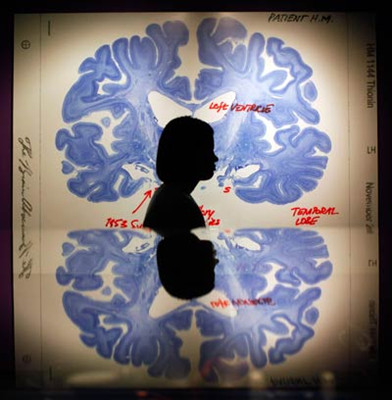
Want to be smarter in work, love, and life? Recent scientific advances have shown that one's intelligence can be improved by "braining training" — and it's not just a bump of one or two IQ points.
想在工作,愛情和生活上表現(xiàn)得更加睿智嗎?近來的科學(xué)發(fā)展成果表明,一個人的智力是可以通過腦瓜訓(xùn)練來提升的,而且不僅僅只是提高那么一兩分智商值哦!
IQ, measured by a battery of tests that capture a wide range of cognitive skills, from verbal to analytical and beyond, has long been thought to be unchanged throughout one's life.
IQ,也就是智商,是通過對不同類型的認(rèn)知技能測試而最終得出的,其中包括語言、分析判斷等方面。長久以來,人們認(rèn)為IQ是終生不變的。
But according to a recent groundbreaking study published in science magazine Nature, IQ can rise by a staggering 21 points over four years—or fall by 18.
但最近,科學(xué)雜志《自然》刊登了一篇具有開創(chuàng)性意義的研究文章。文章里說,IQ可以在四年內(nèi)提高21點(diǎn)或者下降18點(diǎn),著實(shí)令人驚奇。
Cognitive scientist Cathy Price of University College London, UK, and her colleagues found that IQ changes are linked to structural changes in the brain.
來自英國倫敦大學(xué)學(xué)院的認(rèn)知科學(xué)家凱西•普萊斯和同事們發(fā)現(xiàn)智商值變化與大腦結(jié)構(gòu)改變之間存在聯(lián)系。
More specifically, the density and volume of the gray matter changed in the brains of those people with significantly improved IQ points.
更具體點(diǎn)說就是,那些IQ顯著提高的人大腦中灰質(zhì)的密度和體積都增加了。
Recent research has also shown that short-term memory, traditionally regarded as only one aspect of one's IQ, may in fact be the lever that can raise overall intelligence.
近來有研究表明,我們原本認(rèn)為只是IQ的一個方面的短期記憶,事實(shí)上可能是“撬動”整體智力水平的一個“杠桿”。
Scientists led by Susanne Jaeggi of the University of Michigan, US, found in 2008 that short-term memory may be the foundation of pure intelligence to a greater extent than anyone suspected.
來自美國密歇根大學(xué)由蘇珊娜•耶吉領(lǐng)導(dǎo)的一支科學(xué)家團(tuán)隊(duì)于2008年發(fā)現(xiàn),短期記憶力對智力的直接促進(jìn)作用可能超乎任何人的想象。
They trained adult volunteers on a difficult short-term-memory task: simultaneously hearing a string of letters and seeing a series of computer screens that had a blue square in different places.
他們對成年自愿者做了培訓(xùn),讓他們完成一項(xiàng)頗具挑戰(zhàn)性的短期記憶任務(wù)。一邊聽研究人員說的一連串字母,一邊同時觀察一組電腦屏幕上顯示的藍(lán)色方框的位置,每個屏幕的藍(lán)框位置各不相同。











